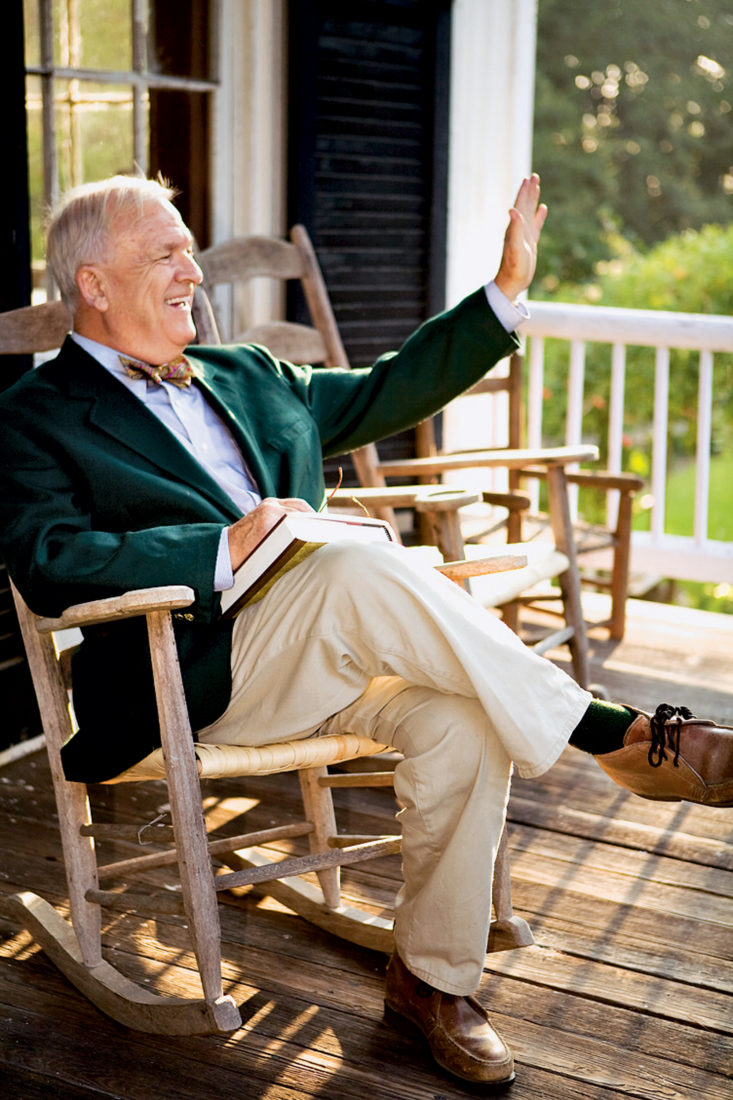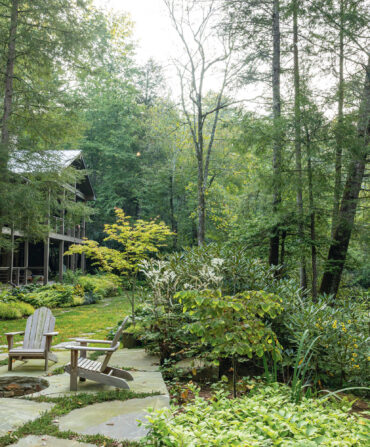Wavering Place doesn’t seem to be wavering. The house strikes one as massive, foursquare, defiantly self-confident, outshining the live oaks and magnolias and several wooden structures that have hung around the spot since the early 1800s. But the big house draws the eye — in its whiteness, its underpinning rhythm of grounded arches, its layered piazzas, and the upsweep of its antebellum columns. How this South Carolina place found its name is lost somewhere in time, though its current proprietor, Julian Adams, postulates that wavering is an apt description for a place that wavers between prosperity and insolvency, for this is the lot of those who deal with the soil.
Julian is descended from the eighteenth-century founder of Wavering Place, a plantation first of indigo, then cotton, twenty-six thousand acres in the 1700s, two hundred and sixty-five now. And Julian, a neurologist, has proved to be as indomitable as the house — in will, that is, in his determination to conserve not only houses but plants and land and stories. Most obsessively, in the last twenty years his energy has gone into saving and propagating native Southeastern plants, one of his most notable accomplishments being the nurturing of the rare and lovely purple and white Stewartia.
When I suggested to Julian that there might be a continuous thread running through his many activities, that he might be above all a preserver, a conserver, he at once came back with his own designation — a rehabilitator. “That must be from the French habiller,” he mused, “so I believe rehabilitate, re-clothe, is the word you want. I like to re-store, re-dress old furniture as well as plants and land and houses.”
One prodigious example of Julian’s drive to rehabilitate is clearly visible in Wavering Place itself. The present house, just south of Columbia, was built in 1855, a mere ten years before Sherman leveled Columbia, yet it came through unscathed. As the story goes, when Sherman’s officer in charge, a doctor, approached the neighborhood of Wavering Place, he remembered that an old friend of his, William Weston, lived in the area. As a matter of fact, the Weston land, Grovewood, adjoined Wavering Place, and thus, through the loyalty of friendship, the whole area escaped the flames. At this chaotic point in history the governess for the Adams’ children was a Pennsylvania girl, a beautiful and talented young woman who in time would become Julian’s great-grandmother.
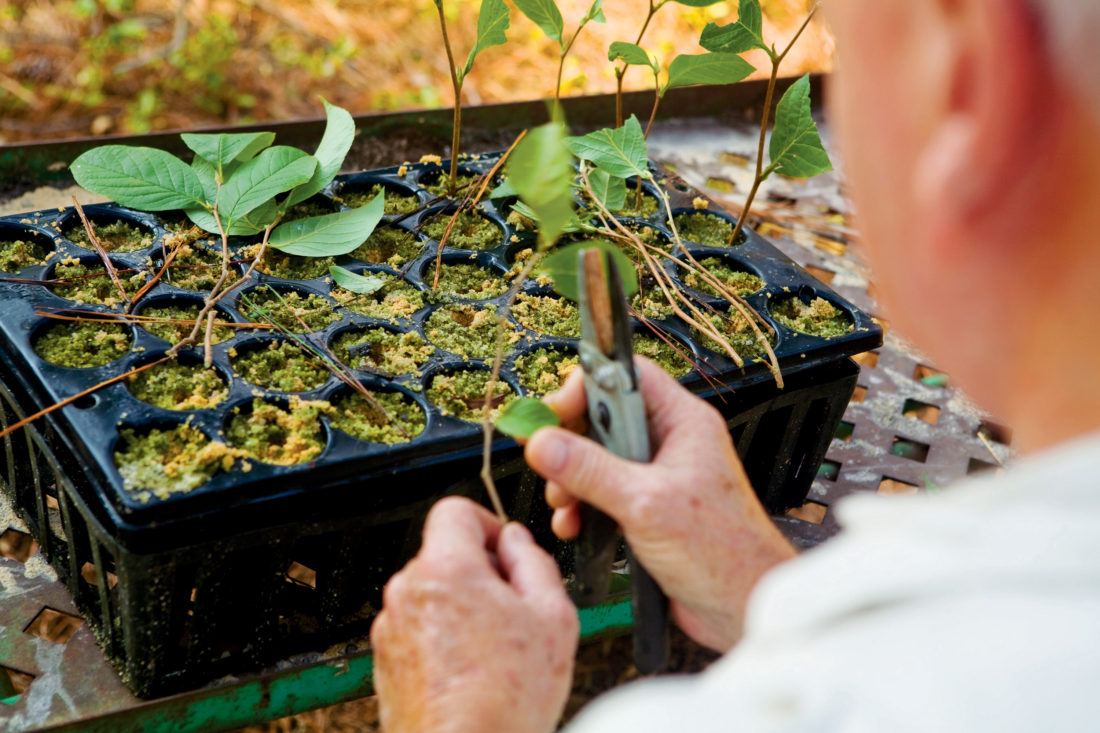
Photo: Helen Calhoun Adams
Working with cuttings
A few years after the Civil War, Julian’s grandfather’s uncle bought Wavering Place from his first cousin, and to make a one-hundred-and-fifty-year-or-so leap into the 1980s, Julian learned, following the death of a cousin, that Wavering Place would be up for sale: The plantation at that late date was clearly wavering and altogether impractical except as a hobby guaranteed to drain one’s funds. This was of course a challenge that would heat up Julian’s blood: He squared his jaw, raised the funds and poured them out, managing even the preposterous feat of dredging up the sixty-four family signatures needed to clear the deed. Julian then proceeded to restore the house, slowly filling it with layers of books and rugs and portraits and paintings (a few of those paintings from his own hand), with deer heads and muskets and model ships and masks from Africa. Soon, seeing the awe of his small daughter, Helen, when each of three nanny goats at Wavering Place gave birth to triplets paid him back a hundredfold for his struggle to restore the estate.
But Julian’s energy was caught up mostly in the surrounding land — the meadow, the avenues, the woodlands, the “English park” around the house, the formal garden to the west of it, and the magnolia-lined carriage way that once fully circled the house. The formal garden has now been reimagined as well as rehabilitated, partly as a walled garden. The half-circle carriage way keeps its Magnolia grandiflora, one of eight types of magnolia found on Wavering Place, but it has become a shady promenade with benches, a fountain, and ferns that choke out weeds and act as a green ground cover between shrubs. Among the ferns are natural plantings of poison hemlock, a beautiful fern-like, lacy plant with a flower that weakly resembles Queen Anne’s lace but is said to have provided the poison that Socrates drank.
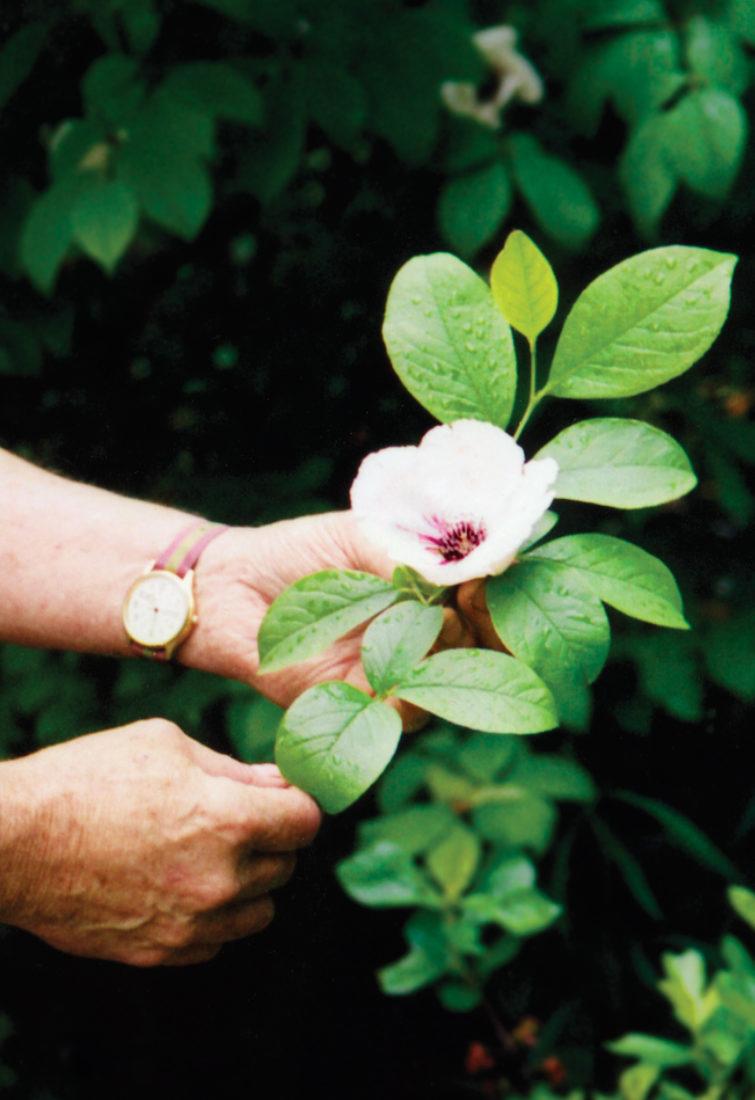
Photo: Helen Calhoun Adams
A Stewartia bloom
The unusual aspect of Wavering Place is that under Julian’s guiding hand all the acres of his domain, wild and domesticated, are with rare exceptions home only to indigenous Southeastern plants, for these are the plants that have come to capture his imagination. As a child he spent Sundays on his grandparents’ farm at Fort Motte, South Carolina, and it was this spot that stimulated two sides of Julian’s “conserving” Southern genius: his language play and gift with storytelling as well as his love affair with plants. It was at Fort Motte that his grandmother led him around her old-fashioned flower garden, which ran along three sides of the farmhouse: a garden of spirea, hydrangeas, narcissus, lycoris, amaryllis, and such. She invited him into the hush of her sunken greenhouse with its dark earth smell, where the child was surrounded with warmth. He could witness her care for the seedlings and buds, and he could sense contentment.
In college it was field biology that shook Julian to attention, and after medical school he married into a family of well-known Charleston gardeners. All this while, Julian was reading, reading, reading — venturing into the little-discussed but intriguing subject of world history through the prism of the garden, the garden east and west, pursuing such byways as the histories of the plants we know, when and how they might have made their way over the Silk Road from the East to Europe and then America. Along the way Julian picked up the evolving concept of using native plants, for it became clear to him that native plants are hardier: They require less pesticide, watering equipment, and fertilizer. The practice saves money and the gardener’s health, and it’s these plants that give a region its pride, so Julian was determined to lend his weight to the championing of native planting in the South.
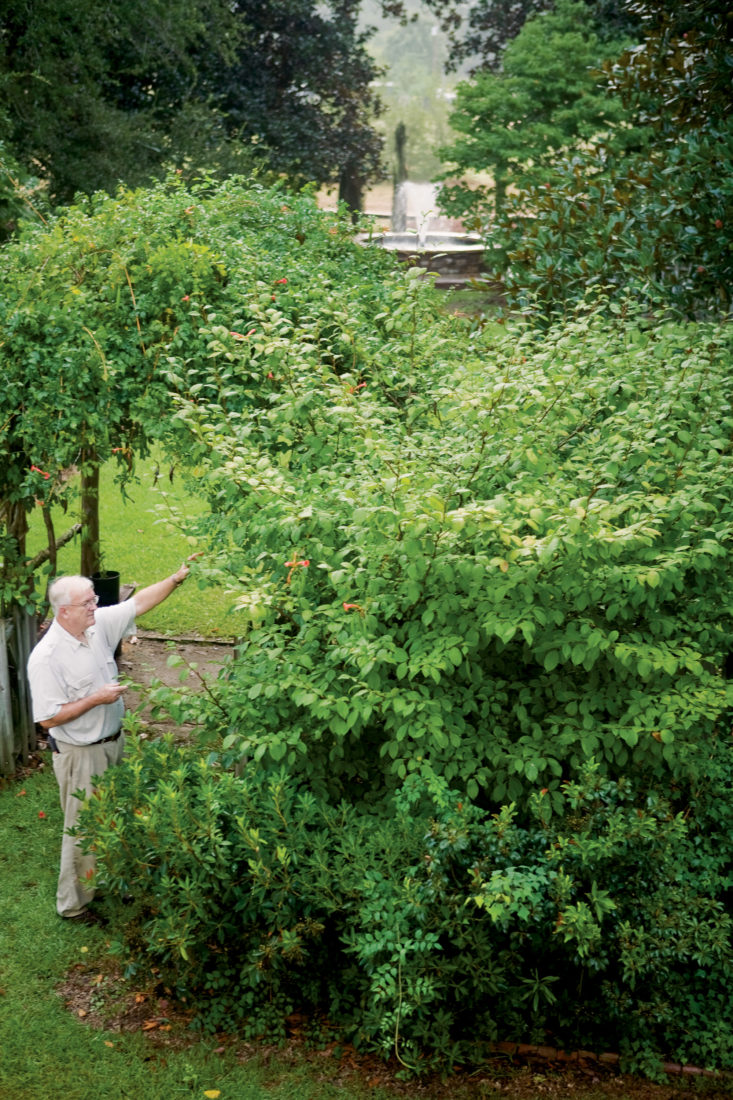
Photo: Helen Calhoun Adams
Julian Adams takes cuttings of Stewartia at the western entrance of the garden.
One of the most striking of Julian’s successes at Wavering Place has been his propagation of the difficult Stewartia — the emblem of the Columbia chapter of the Garden Club of America. The Stewartia malacodendron, called the silky camellia, thrives on the coastal plains and is seen along creek banks. The five white petals and multiple purple stamens make a striking picture, appearing after the leaves of the plant are out. It’s a plant the Columbia Garden Club had managed to propagate by air layering, but this cannot be done on a large scale; thus Stewartia, already susceptible to fungal infections, is uncommon in the trade. “When horticulturists are lucky enough to see this rare plant flowering in the wild, footsteps and conversation cease,” wrote Robert Bir, one of the leaders in plant propagation in the Southeast. Bir himself had never seen the malacodendron in the wild, and he had never successfully propagated it. Certainly, when Julian and his companion-gardener, Charlie Holmes, came across a grove of Stewartia on a creek bank in the northern part of Richland County, they found themselves stunned by the white and purple beauty. In the amazement of this encounter, Julian knew at once that the Stewartia would become the logo for the nursery he sought to set up to gather, stabilize, and propagate native plants. He became obsessed with the possibility of propagating Stewartia, and he and Holmes began trying out multiple approaches: air layerings, root cuttings, new-growth cuttings, and hardwood cuttings. Finally, a combination of these approaches bore the sproutings they’d waited for, and now the rare, small shrubs dot the gardens at Wavering Place, the formal gardens as well as the woodlands garden. Through Julian’s persistence, the flower is at last more easily available to others on the lookout for an unexpected gem.
Besides the Stewartia, Wavering Place is home to the Kalmia latifolia, or mountain laurel, which grows beautifully at two thousand to three thousand feet. Julian has collected hundreds of types of narcissus (he says they are “jonquils” in the South and “daffodils” in the North and in England) — multitudinous flowers blazing across his meadows for months in early spring. He’s still struggling with rare trees from the Beaufort area, and with plantings of sparkleberry, another native plant very difficult to move from place to place and even more difficult to propagate.
“When horticulturists are lucky enough to see this rare plant…, footsteps and conversation cease.” – Robert Bir
Unfortunately, a few of Julian’s ventures have been put on hold by illness and the vagaries of life’s demands. Yet, the Stewartia that Julian started has survived, and recently he has planted more than two hundred young shrubs and again is rooting the cuttings. Through the plants Julian has made himself part of a continuum, cultivating the land that his family inhabited for eight generations, and uncovering and restoring the natural Southern flora that has been too easily lost under interstates and strip malls, or swamped by hothouse generic blooms. It requires a strong imagination and an equal share of obsession to take on rehabilitation — leavened, in Julian’s case, by patience and a bit of Julianesque wit.
Photo: Helen Calhoun Adams
A view of the front of the main house from the peaceful shade of the oaks.
1 of 6
Photo: Helen Calhoun Adams
Julian Adams entertains guests in the once half-circle carriage way that is now a shady promenade.
2 of 6
Photo: Helen Calhoun Adams
Garden View
Looking east from the roof of the main house toward the fountain and the Magnolia grandifloras. The Stewartia is in the foreground on the right.
3 of 6
Photo: Helen Calhoun Adams
Doctor's Study
The library, with a view of the smokehouse.
4 of 6
Photo: Helen Calhoun Adams
Stewartia is at the heart of the logo for Wavering Place’s nursery.
5 of 6
Photo: Helen Calhoun Adams
The entrance to Wavering Place’s garden, looking south through the magnolias.
6 of 6


